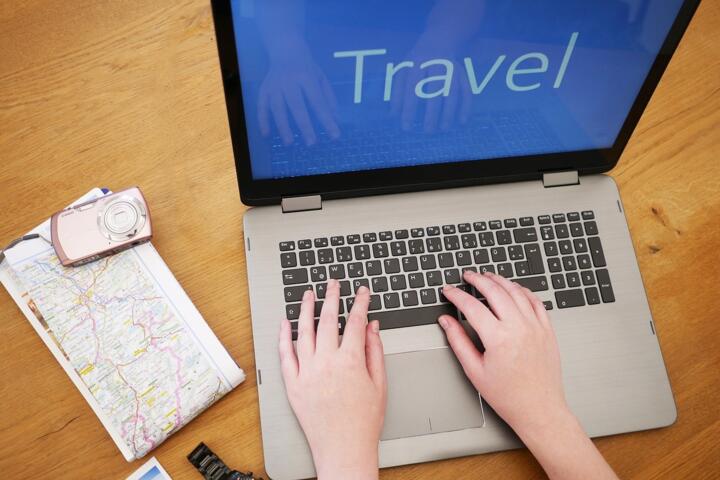In today’s digital age, planning a trip no longer requires piles of brochures, long phone calls, or standing in line at travel agencies. Online travel platforms have transformed how we explore the world, offering convenience, speed, and access to endless options at our fingertips. But with so many websites, apps, and booking tools available, knowing how to navigate online travel effectively can be overwhelming. This guide will help you leverage online travel tools to plan smarter, save money, and enjoy stress-free trips.
Why Online Travel Matters
Booking travel online isn’t just about convenience—it’s about control and efficiency. Smart use of online travel resources allows you to:

-
Compare Options Instantly: Flights, hotels, car rentals, and activities can all be compared in real-time.
-
Save Money: Access deals, discounts, and dynamic pricing that aren’t available offline.
-
Plan Efficiently: Build itineraries, coordinate transportation, and manage bookings from one platform.
-
Access Reviews and Insights: See real traveler experiences to make informed choices.
Using online travel wisely transforms the experience from stressful to seamless.
Step 1: Choose the Right Platform
Not all travel websites and apps are created equal. Selecting the right platform depends on your needs:
-
Flight-Focused Sites: Skyscanner, Kayak, Google Flights. Best for comparing airline prices.
-
Hotel Booking Platforms: Booking.com, Agoda, Hotels.com. Offer extensive accommodation choices.
-
All-in-One Travel Services: Expedia, Trip.com. Ideal for bundling flights, hotels, and car rentals.
-
Activity and Experience Platforms: Viator, GetYourGuide. Perfect for booking tours and local activities.
Pro Tip: Use multiple platforms to compare options and prices before committing to a booking. Some sites offer “secret deals” or promo codes that others may not.
Step 2: Plan Ahead but Stay Flexible
While online travel makes last-minute bookings possible, planning in advance often saves money and stress:
-
Set Your Dates Early: Flights and accommodations are typically cheaper when booked weeks or months ahead.
-
Use Fare Alerts: Many platforms allow you to track prices and receive notifications for drops.
-
Consider Off-Peak Travel: Avoid weekends, holidays, and peak tourist seasons for lower costs and fewer crowds.
-
Stay Flexible with Locations: Nearby airports or alternate accommodations can save significant amounts.
Example: Traveling to Paris? Flying into Orly instead of Charles de Gaulle, or staying in a nearby neighborhood, can reduce costs without compromising your experience.
Step 3: Optimize Your Booking Strategy
Online travel offers multiple ways to secure better deals:
-
Compare Multiple Sites: Prices can vary between platforms due to fees or promotions.
-
Use Reward Programs: Airline miles, hotel points, and credit card rewards can offset costs.
-
Book in Packages: Bundling flights and hotels can be cheaper than booking separately.
-
Check Cancellation Policies: Flexible bookings prevent financial loss if plans change.
Pro Tip: Always double-check final prices, including taxes and fees, before confirming any online booking.
Step 4: Leverage Reviews and Ratings
One of the most valuable aspects of online travel is access to reviews:
-
Check Multiple Sources: Use both website reviews and independent review platforms like TripAdvisor.
-
Look for Recent Feedback: Old reviews may not reflect current conditions.
-
Focus on Key Details: Cleanliness, location, customer service, and amenities often impact your experience most.
-
Balance Pros and Cons: No destination or hotel is perfect; prioritize what matters most to you.
Example: A hotel may have a perfect rating for luxury, but if it’s far from public transport and you plan to explore the city, it may not suit your needs.
Step 5: Use Online Tools to Build an Itinerary
Online travel isn’t just for booking—it’s also for organization:
-
Itinerary Apps: TripIt, Google Trips, and Kayak Trips keep all your bookings and confirmations in one place.
-
Map Integration: Google Maps and Citymapper help plan routes between attractions, hotels, and restaurants.
-
Calendar Sync: Add bookings to your calendar with reminders for check-ins, tours, or flights.
-
Travel Guides and Blogs: Online resources offer tips and hidden gems tailored to your destination.
Pro Tip: Digitally organizing your trip reduces stress and ensures you don’t miss important bookings or deadlines.
Step 6: Stay Safe and Informed
Online travel comes with security and reliability considerations:
-
Use Secure Websites: Look for HTTPS and official apps to avoid scams.
-
Check Payment Policies: Use trusted payment methods with buyer protection.
-
Backup Documents: Keep digital copies of your passport, ID, and booking confirmations.
-
Research Local Travel Rules: Online travel platforms often provide alerts for entry requirements, visa policies, and health advisories.
Example: Checking a destination’s COVID-19 regulations via an online travel portal can prevent last-minute travel disruptions.
Step 7: Embrace Technology for a Better Experience
Modern online travel tools can enhance your trip in real-time:
-
Mobile Boarding Passes: Reduce paper clutter and save time at airports.
-
Language Translation Apps: Facilitate communication and navigation abroad.
-
Expense Trackers: Monitor travel spending and stick to your budget.
-
Offline Access: Download maps, itineraries, and tickets to avoid connectivity issues.
Tip: Explore apps recommended by your travel platform—they often integrate seamlessly with your bookings.
Conclusion
Online travel has revolutionized the way we explore the world. By selecting the right platforms, planning ahead, optimizing bookings, leveraging reviews, organizing itineraries, staying safe, and using technology smartly, you can make travel smoother, more cost-effective, and incredibly enjoyable.
Key Takeaway: Mastering online travel is about combining preparation with flexibility. With the right tools and strategies, you can save money, reduce stress, and make every trip a memorable adventure.
